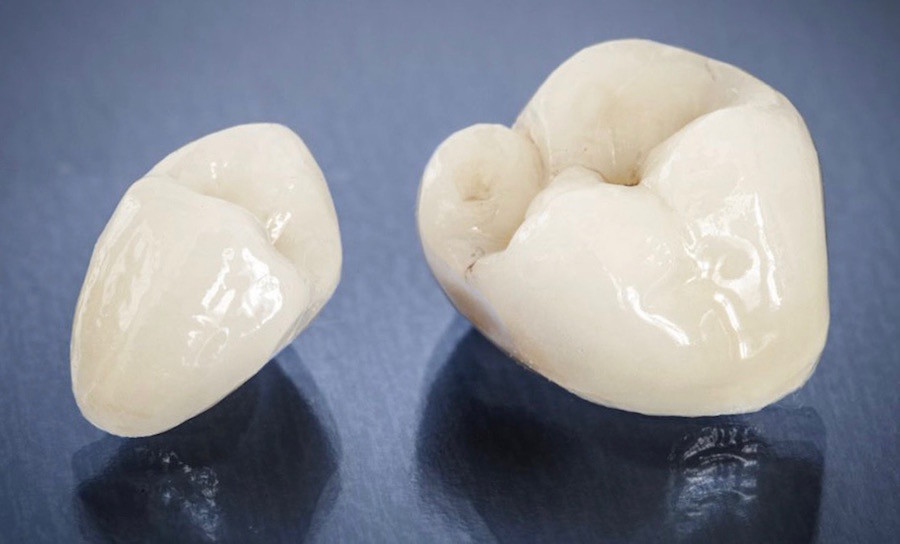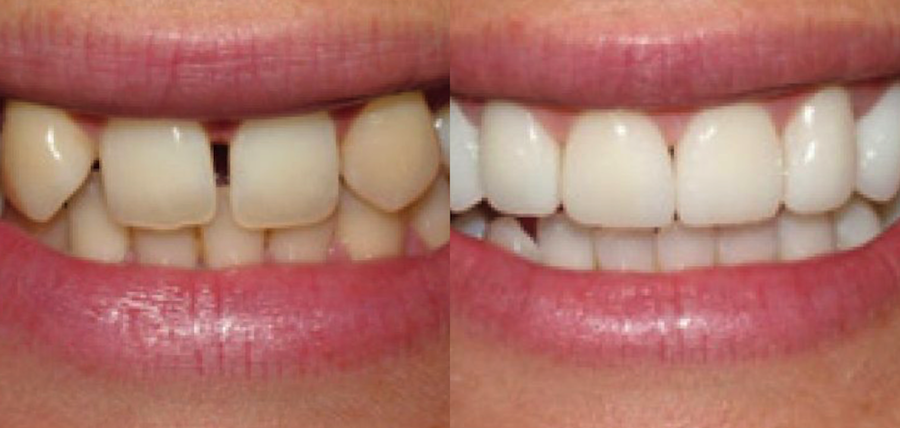
One of the most commonly asked questions in the field of specialized dentistry, is in regards to when teeth are in need of a dental crown. Before answering that question, allows us to first define what a crown is in this context. The Canadian Dental Association (CDA) defines a crown (aka a cap) as a hollow, artificial tooth that is applied to cover a damaged or decayed tooth. While that definition alone provides you with a partial answer to the question as to when a tooth needs a crown, we are here to provide a more succinct look at when it may indeed be an option for your oral cavity condition.
6 Reasons Why Your Tooth (or Teeth) May Need a Dental Crown
You Have a Cracked or Fractured Tooth
A cracked or fractured tooth is not only unsightly for some, it opens you up to the risk of a variety of oral health concerns, including the untimely death of the nerves in the impacted area and/or the growth of an abscess which can subsequently demand the need for an emergency root canal (a procedure which is also followed by the placement of a crown). In some cases, it is too late for endodontic treatment, with extraction being the only recourse. While there are steps that you can take to mitigate the risk of fractured teeth, if you find that a crack has already reared its head you will need to have a dental crown placed to cover the tooth and restore the shape, size, strength, and improve appearance and function alike.
The procedure involves a specialist removing the remaining enamel layer of your tooth to leave behind a small post-like structure known as an abutment. The abutment will assist in anchoring your new crown after the clinic has prepared a detailed impression and covered it with a temporary crown. Then, the impression is taken to the dental lab to serve as a model used to prepare the permanent crown. From there, a second appointment is made and the permanent crown is bonded (via a dental adhesive) into place and after a brief recovery period your tooth and function will be returned to their former glory.
When You’ve Lost a Filling and Need a Better Option
A traditional filling is used to effectively repair a small area of tooth decay or in some instances a minor dental fracture. However, over the years, inconsistencies in your oral hygiene and/or an acute event may weaken the once strong bond and lead to a lost filling. Often an individual does not notice this right away, but eventually a transformation of texture or color and/or increased sensitivity in the tooth occurs, alerting them to the problem. Once identified, a filling can be reapplied. However, in many instances the minor decay or fracture may have worsened, and call for a larger filling. Unfortunately, there may not be enough remnants of tooth enamel to anchor in a new filling and at this point a dental specialist will likely recommend a dental crown.
You Have a Weak Tooth
There are many things that destroy tooth enamel. These included acidic foods/beverages, teeth grinding, eating disorders, other health disorders, the use of pharmaceuticals and other drugs, and misuse (i.e. chewing on pens, etc.). Overtime, the above activities and underlying conditions can diminish enamel to the point of no return, rendering your teeth sensitive and weak. While a crack or fracture may not yet have occurred, a dental specialist may recommend the immediate application of a dental crown to prevent further (and highly likely) complications.
You Have Discolored and/or Misshaped Teeth

In some instances teeth are so discolored that even the best teeth whitening procedures simply won’t cut it. If this is the case, a cosmetic specialist may recommend dental crowns as a solution. Just remember that after receiving a dental crown you will still need to follow oral hygiene best practices and consider minimizing the consumption of foods and beverages that contribute to discolored teeth.
The same goes for those with misshapen teeth. A crown can be more effective than veneers because they cover a greater area of the teeth and will have a much more positive impact on appearance.
To Cover Your Dental Implant
While we won’t go into the specifics of the dental implant procedure (you can find that here), permanent crowns are applied by your dental implant specialist to complete your restoration.
To Attach a Bridge
A crown is also used to replace a tooth as part of dental bridgework. When receiving bridgework, you need a minimum of three crowns to span the space of the missing tooth. One crown (a pontic crown) is used for the missing tooth, while the other two crowns are placed over the healthy adjacent teeth, also known as the abutment teeth. The two crowned abutments support the pontic. Of course, in the event that there more missing teeth, additional crowns are needed to bridge the gap accordingly. View more on dental bridges and how crowns are incorporated into the procedure.
To learn more about whether or not you need a crown, contact Vancouver Dental Specialty Clinic to schedule a consultation.


